The visually very manky pump hoses from the V8 - probably original (40 years and 220k) as they have looked pretty-much like this during my 20 years and 100k. The slight staining at the end of the top hose only occurred during removal.
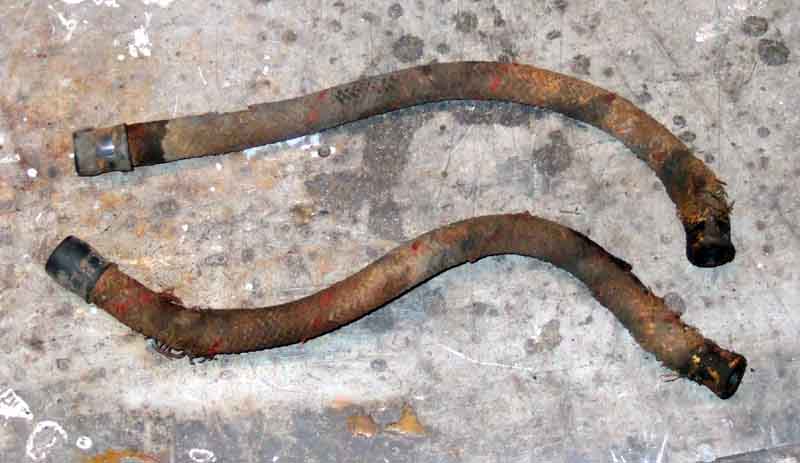
This type of clip was easy to cut through
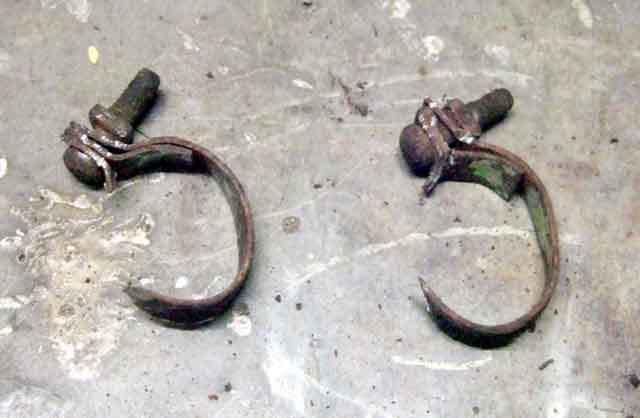
Back in with new hoses and Jubilee clips - the latter Waxoyled to hopefully keep them corrosion-free.
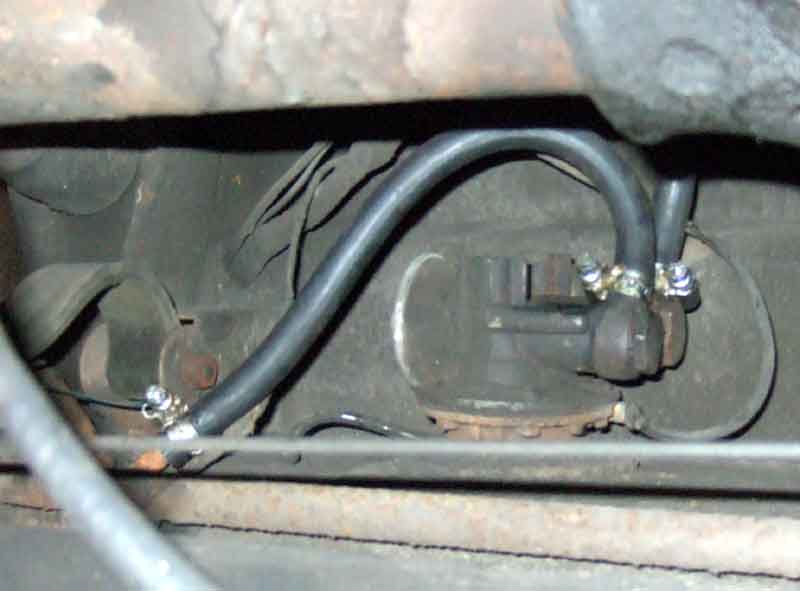
A section from the original pump hose - the short blacker section on the right had been over the end of the pipe, the rest exposed to fuel. No reinforcing, and absolutely no cracking on the end or the inside and external surfaces, even slit and opened out like this.
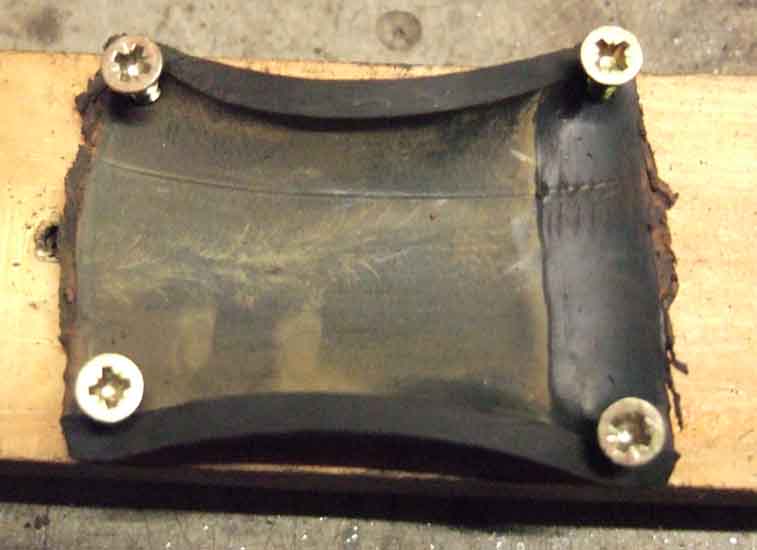
20 year-old carb hose, radial cracks at the end but not extending under the clamps. Some evidence of circumferential damage where the end of the carb port has been, probably from the unsecured filter flapping about all that time (which was how it came to me). Apart from that no other traces of cracking inside or out.
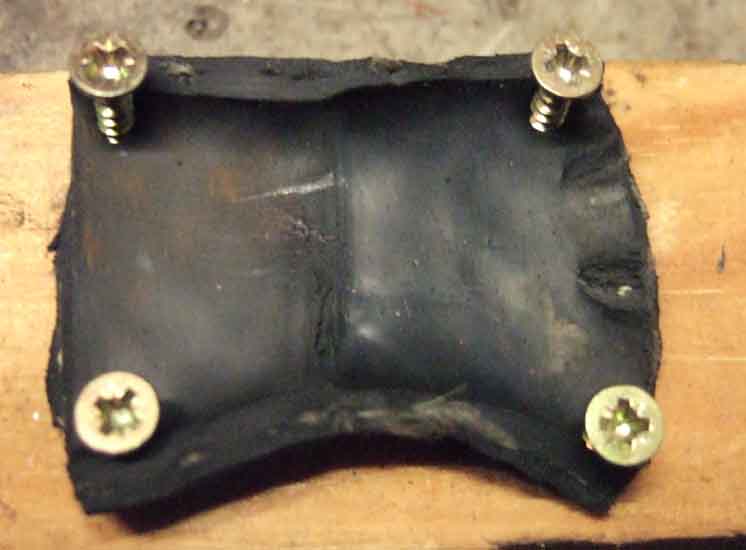
V8 overflow hose replaced in my time but not carrying fuel only fumes, only noticed when that float valve happened to stick:
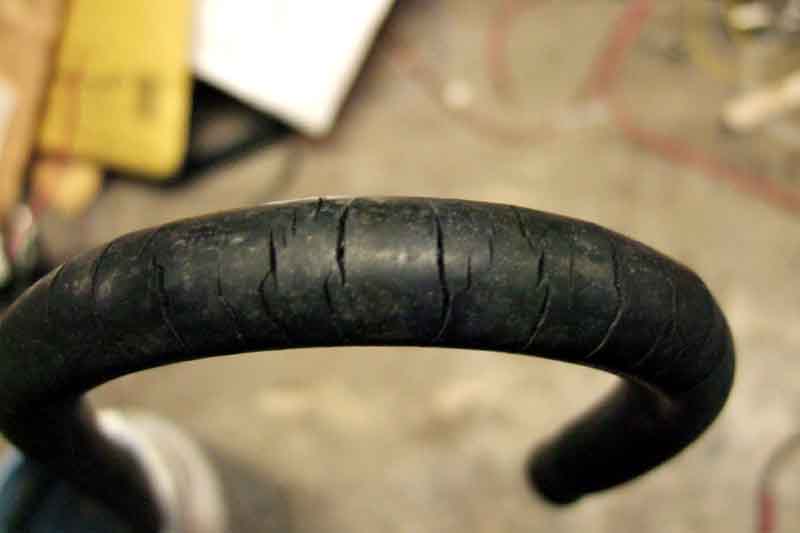
Bee's carb hose - "Looks like new" until you see under the braiding:
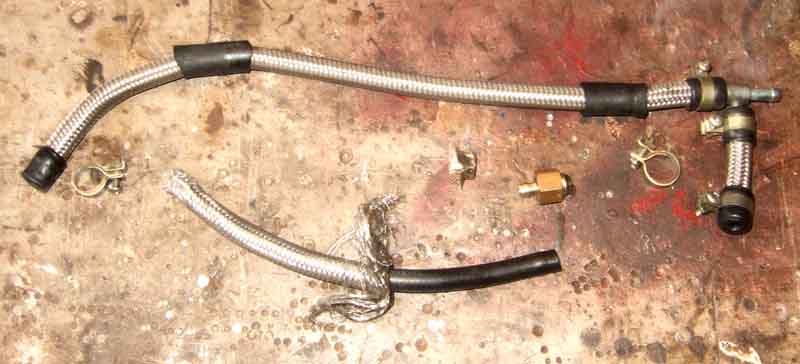
The section from the bulkhead connector to the T-piece but all of them were the same. Probably 30 years old. As all the kits and individual pipes I could see at the usual suspects were braided I cut the bulkhead connector off the old hose and have bought some loose hose SAE J30 R9 as for Vee's pump above:
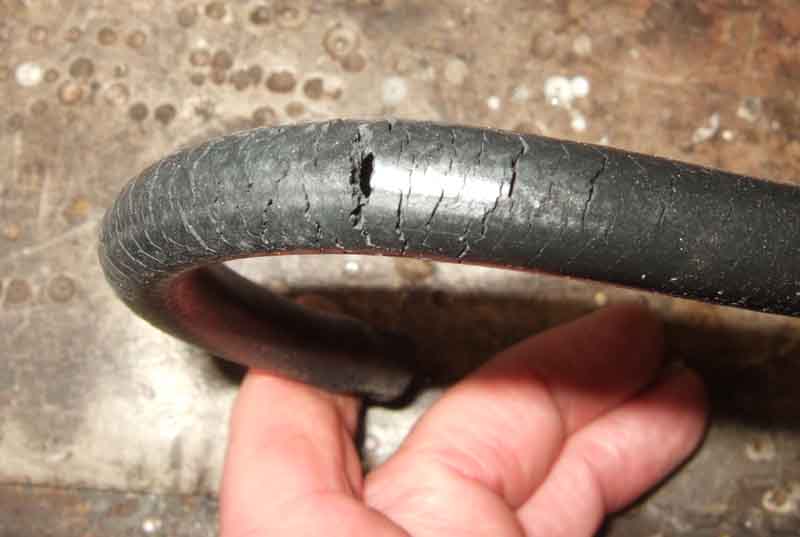
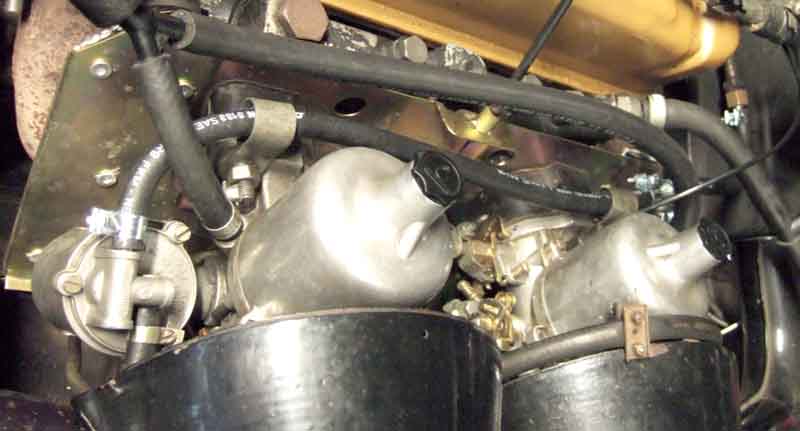
Connection to the body pipe by the heater, if replacing braided hoses you will probably need to use smaller 10-12mm clamps. You could reuse the braiding on this first section if bothered about manifold heat:
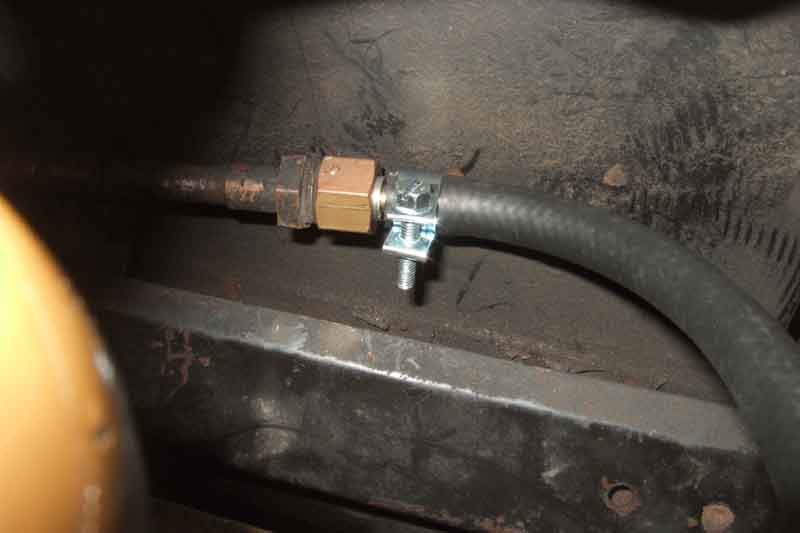
In the engine compartment the metal fuel pipe is supported by bracket AHH8900. This is often referred to as a fuel pipe heat-shield but that pipe is above the bracket, it's brake pipes that run behind it and the Parts Catalogue does describe it as 'Shield-heat-brake pipe'. Probably only fitted on LHD and after the remote servo became available on RHD, but even then maybe only on CB cars as after that the brake pipes ran over the top of the heater and Clausager does not show the bracket. So perhaps more a case of mechanical protection in the event of the engine coming back in an impact as engine bay heat is likely to be even higher further up: (Ashley Hinton and Dave Braun)

I cut the new hose pieces to the same lengths as the old, but the spur to the rear carb is too long which pushes the Tee towards the heat shield, the inlet hose clamp has to go at angle to avoid rattling against the shield, and that section is closer to the exhaust manifold than I would like:
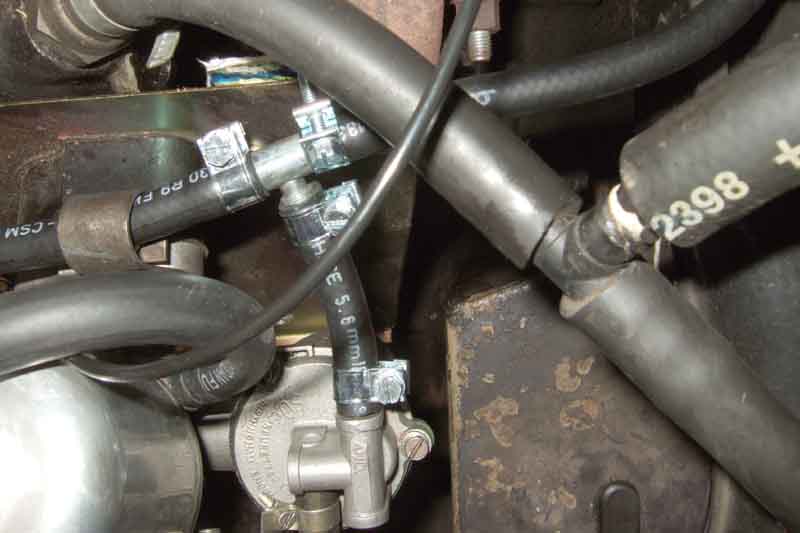
So I shortened the spur to the rear carb which solved both problems. I thought I might have to make the input section longer but it's fine. The section from the Tee to the front carb could do with being a bit longer, I have enough left over from the 1M so may change that later on:
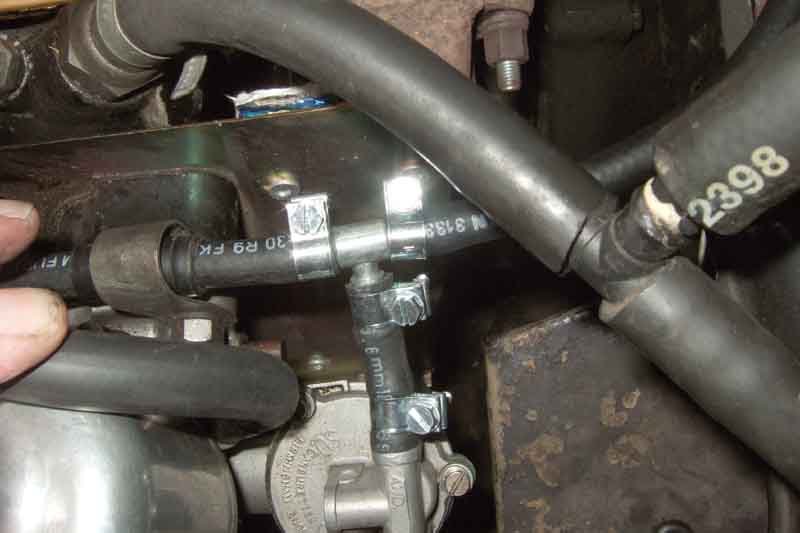
I thought about putting some of the old braiding over the input hose to protect it from the exhaust manifold heat. You could say that's covering up the problem again, but there is almost as much cracking on the long section to the front carb where it turns to the carb as where the inlet hose turns. Both areas are on the outside of the turns i.e. facing away from the manifold on the input hose, so it's not heat causing it anyway. As soon as either bend shows any signs of cracking I'll know it's time to replace it all:
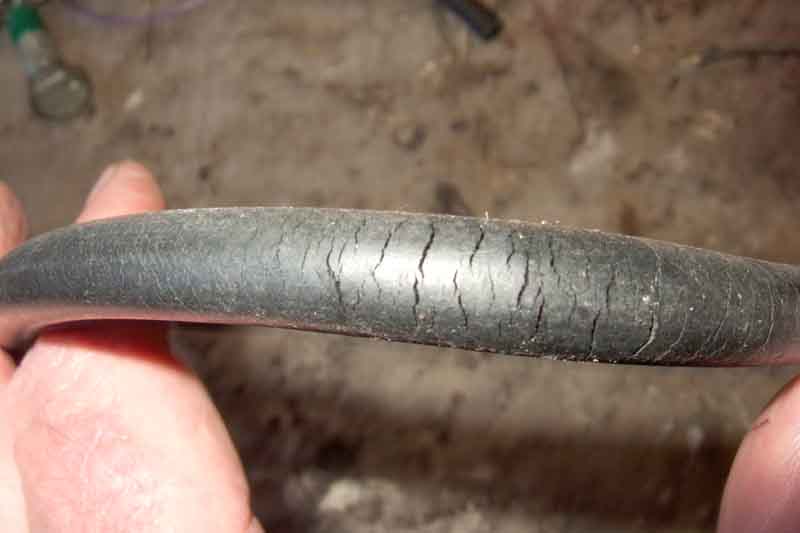
The top sleeve is original and is supposed to protect the hose from chafing on the carb stud brackets. But the ID was too big for the hose and the OD too small for the brackets so it used to slip out of position. Wasn't a problem with braided hose but I didn't want that happening with the plain rubber which is an even smaller diameter than the braided. The lower sleeves were end caps on the braided hoses to neaten them up, and the clamps were positioned on them:
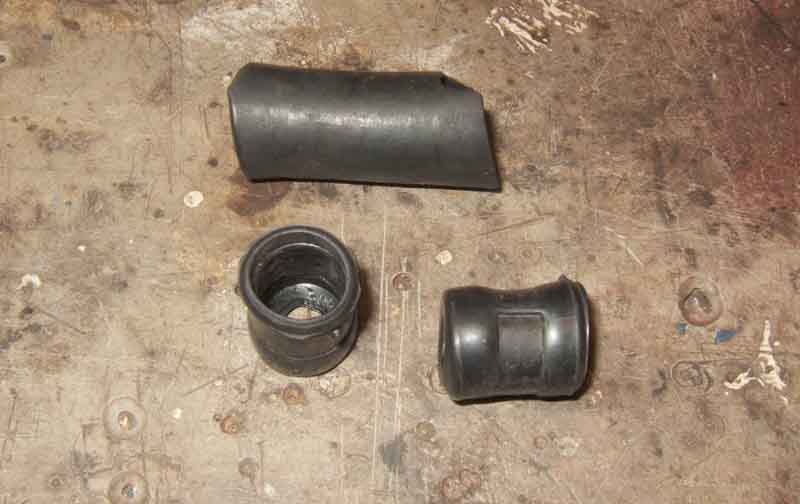
The braiding sleeves looked like heat-shrink, so I cut the partially closed ends off and slid them onto the new hose where they are a snug fit and shouldn't move. Each one is shorter than the bracket, but there were five on the braided hoses so I've used two inside each bracket and they extend past the edges:

Bee's pump hose with the braiding removed. No sign of any deterioration, but unlike the carb hoses it does have markings - BS3212/1 seems to have a max temp of +60C, OK for pump hoses but a bit marginal for the engine compartment. Dated 1996 and fitted 1998:
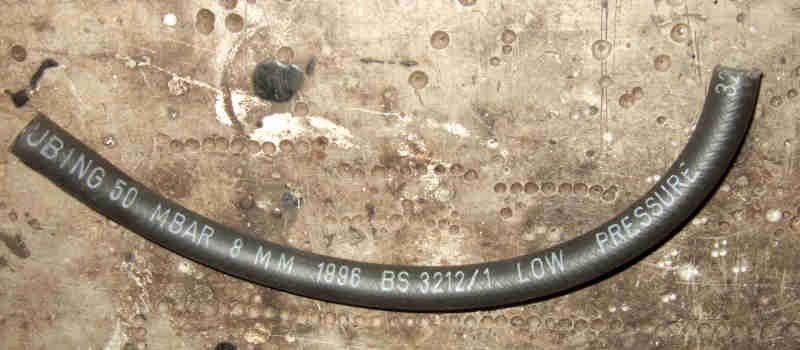
I'd bought a new banjo to fit to the hose before I started to save messing about with the old one once removed if fuel started trickling out (it did!). But looking at the old banjo after cutting off the hose I noticed it is flat both sides, not recessed on one side as here. The bolt and fibre washer goes this side, with either another fibre washer or an O-ring (depending on pump type) on the other: Rimmer Bros
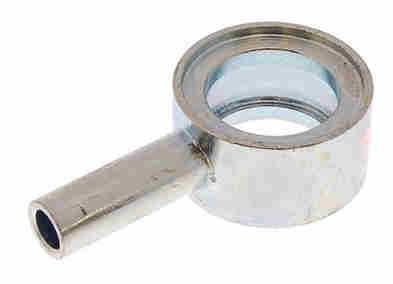
But I couldn't get this to seal despite using two fibre washers on the recessed side and tightening as hard as I could. Not dripping or running but shiny at the join from a tiny seep, presumably evaporating fast enough, but no smell in the garage. Eventually I reused the original banjo and it was immediately obvious that this was tightening progressively and sealed with only 'normal' pressure on the spanner. The banjo above tightened suddenly, i.e. even with two fibres washers it was too 'thin' for the banjo bolt and was bottoming in the pump thread. More info here.
